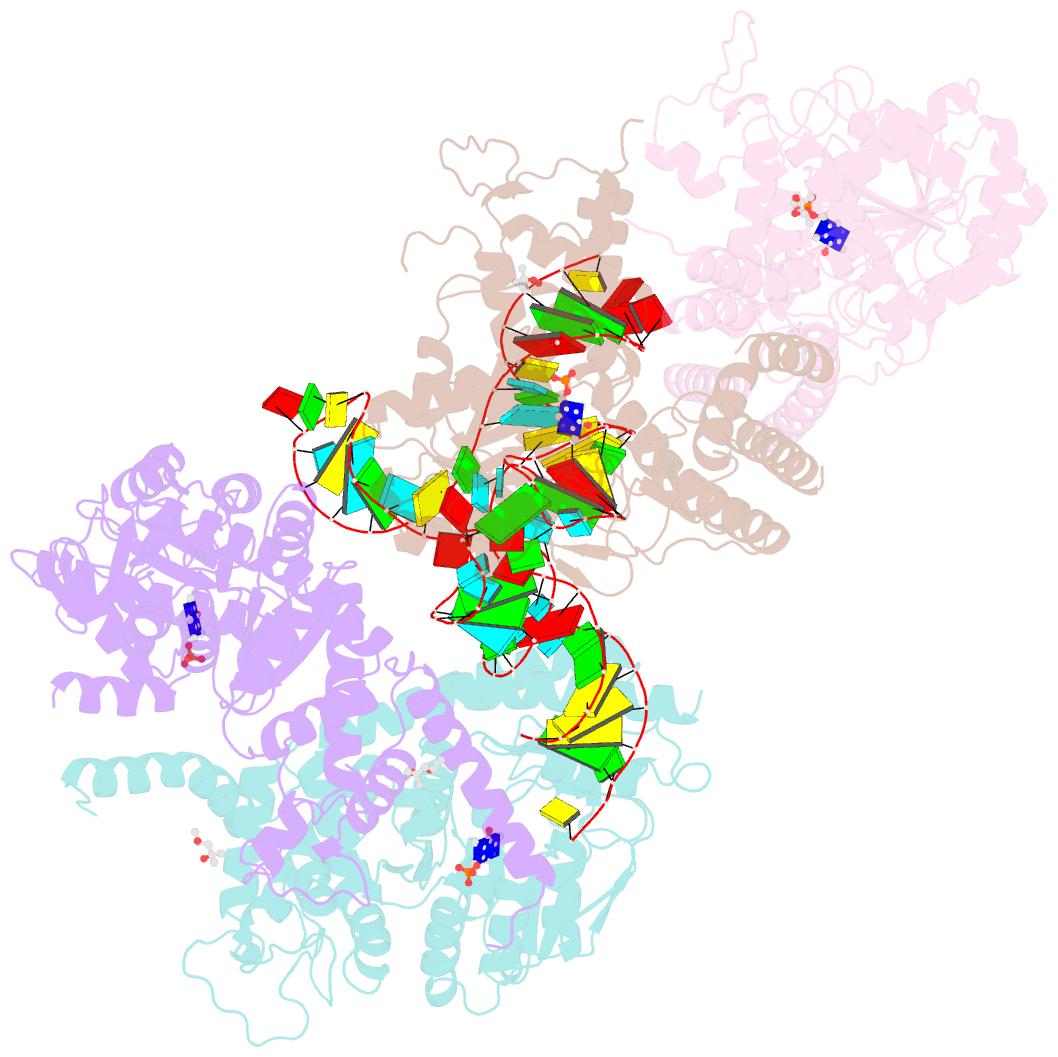Summary information and primary citation
- PDB-id
- 8g9z; SNAP-derived features in text and JSON formats;
DNAproDB
- Class
- transferase-RNA
- Method
- X-ray (2.07 Å)
- Summary
- High-resolution crystal structure of the human selenomethionine-derived sepsecs-trnasec complex
- Reference
- Puppala AK, Castillo Suchkou J, French RL, Kiernan KA, Simonovic M (2023): "Structural basis for the tRNA-dependent activation of the terminal complex of selenocysteine synthesis in humans." Nucleic Acids Res., 51, 4012-4026. doi: 10.1093/nar/gkad182.
- Abstract
- O-Phosphoseryl-tRNASec selenium transferase (SepSecS) catalyzes the terminal step of selenocysteine (Sec) synthesis in archaea and eukaryotes. How the Sec synthetic machinery recognizes and discriminates tRNASec from the tRNA pool is essential to the integrity of the selenoproteome. Previously, we suggested that SepSecS adopts a competent conformation that is pre-ordered for catalysis. Herein, using high-resolution X-ray crystallography, we visualized tRNA-dependent conformational changes in human SepSecS that may be a prerequisite for achieving catalytic competency. We show that tRNASec binding organizes the active sites of the catalytic protomer, while stabilizing the N- and C-termini of the non-catalytic protomer. Binding of large anions to the catalytic groove may further optimize the catalytic site for substrate binding and catalysis. Our biochemical and mutational analyses demonstrate that productive SepSecS•tRNASec complex formation is enthalpically driven and primarily governed by electrostatic interactions between the acceptor-, TΨC-, and variable arms of tRNASec and helices α1 and α14 of SepSecS. The detailed visualization of the tRNA-dependent activation of SepSecS provides a structural basis for a revised model of the terminal reaction of Sec formation in archaea and eukaryotes.





